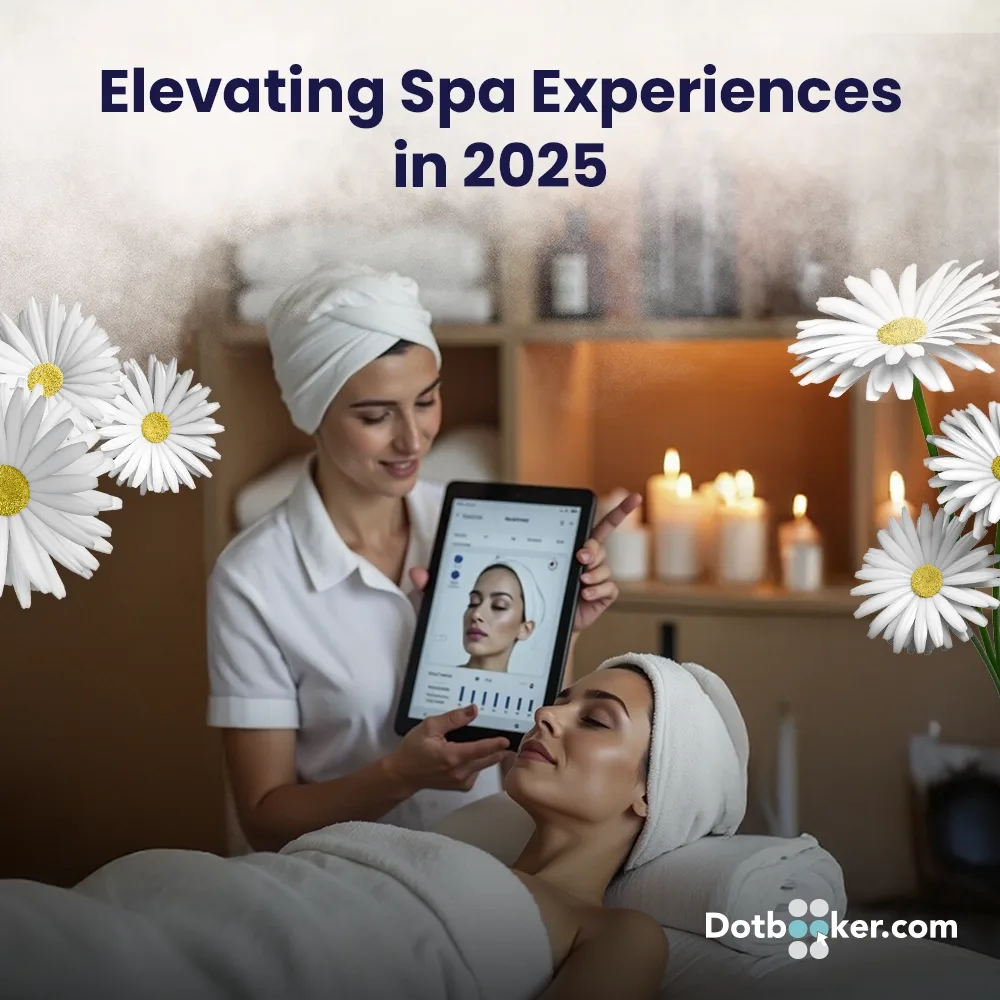
- By Dotbooker
- May 26, 2025
- 1231
AI-Powered Personalization: Elevating Spa Experiences in 2025
Walk into a spa in 2025, and you’ll likely find yourself in a conversation you never started.
The lights dim just the way you like. The air carries a scent that quiets your mind before you even realize it. The music? It’s more than background noise—a rhythm matching your breathing. You haven’t said a word, but the spa already knows what kind of day you’ve had.
This is the age of AI personalization in spas—a world where every touch, scent, sound, and suggestion feels meant just for you. It’s not futuristic. It’s now.
Why “Custom” Isn’t Custom Enough Anymore?
Let’s rewind for a moment. Think back to spa visits even five years ago. You were likely handed a clipboard, asked to check a few boxes, then given a “customized” service based on a glance and your therapist’s instincts.
And while that human connection mattered, it had limits.
Now? AI flips the script. With your permission, your spa session can draw from real-time data—your sleep patterns, heart rate variability, and even hydration levels. It can consider your past preferences, skincare history, and monthly energy fluctuations.
This isn’t just a massage with your name on it. It’s a spa customer experience engineered by knowledge, intelligence, intuition, and deeply personal.
Decoding the Magic: How AI Works in Spas
Let’s strip away the buzzwords and get into the nuts and bolts.
When we talk about AI-driven wellness, we’re talking about invisible technology designed to enhance, not overwhelm. It’s not replacing your massage therapist with a robot. It’s giving that therapist superpowers—insight, memory, and precision.
Here’s how it unfolds behind the scenes:
Smart Intake Systems

You fill out a form once, just once. After that, the system remembers your allergies, pain points, oil preferences, and conversations with staff. Each session builds upon the last, becoming more “you” every time.
Predictive Treatment Planning

The system doesn’t just show you available slots. It recommends a service based on your body's performance this week. If your wearable says you haven’t slept well or hit five gym sessions in four days, it’ll suggest deep-tissue recovery, not hot stone indulgence.
Real-Time Session Adjustments

During your massage, biometric sensors in the massage bed detect rising tension or elevated heart rate. The pressure gets lighter. Aromatherapy intensity lowers. The music tempo slows down. You don’t notice the tweaks, but your body does.
That’s AI personalization in spas at its core: invisible care that responds in real time, giving your body what it needs before you even know it.

Spa Customer Experience: Expectations Are Evolving
The spa experience is no longer defined by ambiance alone but by precision, empathy, and personalization. In 2025, guests expect spa visits to mirror the intelligence of their daily digital lives. That means responsive systems, smart automation, and emotional intelligence—not just luxury interiors.
Let’s dive into the new pillars of spa customer experience, shaped by AI:
1. Hyper-Personalized Booking Journeys

Today’s clients don’t want to scroll through endless menus. They want curated suggestions based on past visits, preferences, wellness goals, and even biometric data from wearables. An AI-driven system might notice that a client tends to book a recovery massage every second Friday post-leg day and pre—suggest the same, saving time and showing care.
Clients also expect self-service with depth—chatbots that don’t just book, but recommend, answer nuanced questions, and even reschedule based on weather, mood, or travel changes.
2. Check-In That Feels Like a Conversation
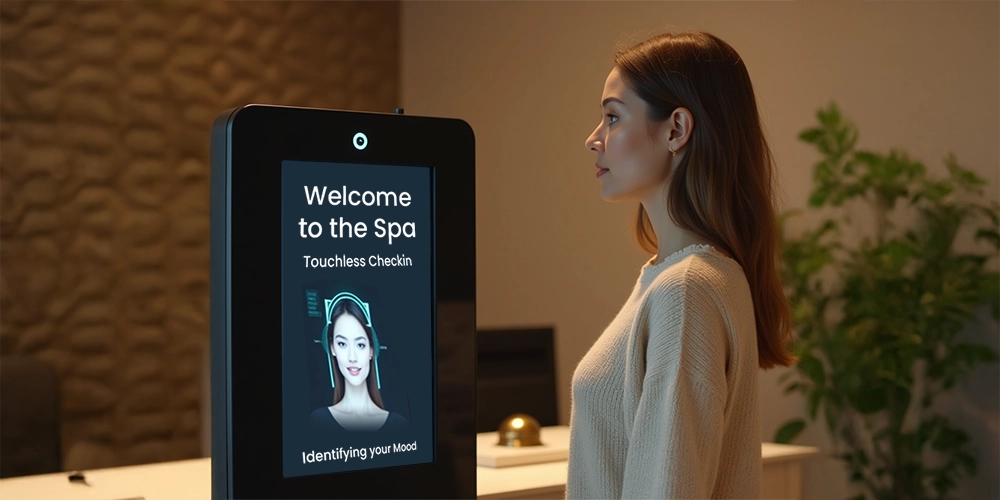
AI now allows touchless, mood-based check-ins. A kiosk or app reads the guest’s expression, tone of voice, or short prompts (e.g., “Feeling anxious today?”), and instantly adjusts room temperature, scent profiles, and background music.
This mood-to-ambience mapping creates a transition from the outside world into the spa experience in real time, without staff needing to guess.
3. Invisible but Intelligent In-Session Customization
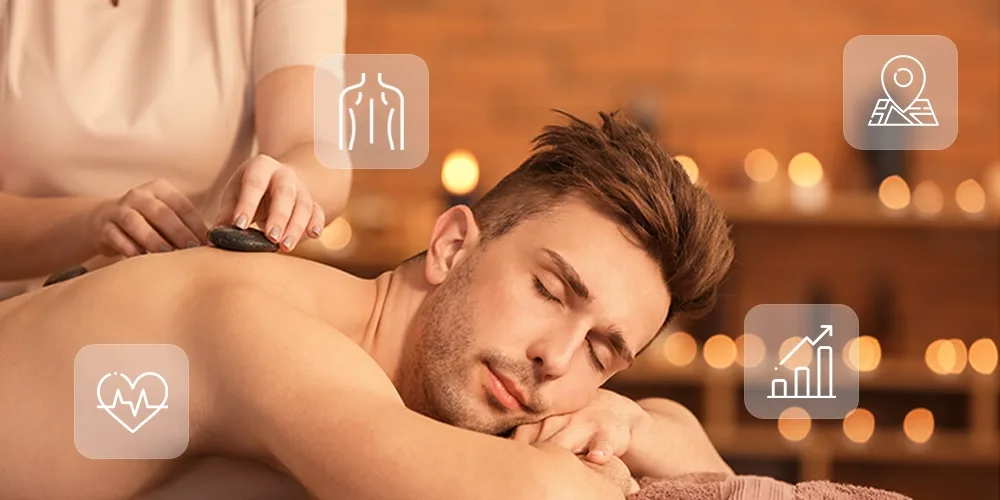
Clients no longer expect to explain how they’re feeling. They want systems to sense and respond. Whether it’s a smart massage table adjusting lumbar pressure based on muscle density, or ambient light responding to heart rate drops, clients experience this as “intuitive care”—but in the background.
Even mid-treatment, therapists can receive nudges from the system: “Client tension has shifted to right scapula,” or “Heart rate elevated, switch to calming mode.”
4. No-Sell Upsell Through Relevance

The new client doesn’t mind spending more—if it feels useful. “Add this oil for ₹600” feels intrusive. But “Based on your skin scan, we recommend a 5-minute hydration booster” feels like advice, not a sale.
AI creates this magic by identifying real-time needs and offering contextual upgrades, not pushy promotions.
5. End-to-End, Omnichannel Care

Spa client experience extends far beyond the session. Guests now expect:
- Automated product suggestions based on in-session insights
- Feedback loops that are short, smart, and used to improve
- Intelligent rebooking nudges (e.g., “Your skin benefits most from facials every 21 days—shall we book now?”)
This is the spa customer experience in 2025: fluid, responsive, and quietly intelligent.
The Science (and Soul) of Personalized Spa Treatments
True personalization isn’t just about name tags or adjustable headrests. It’s about designing wellness around the client’s internal rhythms, external environment, and emotional state—all at once. With AI, spas now deliver treatments that are not just tailored—they are synchronized to each guest’s body, mind, and lifestyle.
Here’s a deep dive into how personalized spa treatments are redefining the very idea of care:
1. AI Skin & Body Diagnostics That Evolve in Real-Time
Skin doesn’t behave the same every day. Humidity, hydration, sleep, travel, and diet affect skin quality. AI-powered tools can scan pore size, detect inflammation, and assess texture changes before symptoms are visible. These diagnostics lead to dynamically composed facials using real-time formulas.
Using a surface pressure sensor, identify areas that need attention for massages, posture analysis, and stress zone detection. It’s like having a blueprint of your body’s current status—updated per visit.
2. Session Flows Based on Intent
AI helps convert vague goals into structured treatment plans. A guest selecting “emotional detox” may receive:
- A lymphatic massage
- A balancing aromatherapy blend based on hormonal levels
- Calming music frequencies are attuned to heart coherence.
- Lighting adjustments that mimic sunset warmth
In contrast, a guest selecting “focus and energy” might receive peppermint aromatherapy, upward massage strokes, cool room temperature, and binaural beats designed for alertness.
The difference? AI builds these combinations in seconds, removing guesswork and enhancing results.
3. Micro-Customizations That Go Beyond the Menu
Beyond the broad treatment plan, AI tailors:
- Massage oil absorption rates and skin hydration
- Facial tool usage (e.g., gua sha vs. cryotherapy) based on detected tension
- Steam timing based on open-pore sensitivity
Even things like robe size, foot soak temperature, and pillow angle are adjusted quietly through preferences and biometric insight.
4. Ingredient Logic & Allergen Intelligence
Today's guests expect more than natural products—they want relevant formulations. AI reads a guest’s history (e.g., coconut oil sensitivity, Vitamin C preference, seasonal dry patches) and suggests the right combinations from the spa’s product range.
If two guests book the same facial, they may walk away with entirely different products, processes, and post-care, all tuned to their skin’s story.
5. Connected Post-Treatment Optimization
After the session, AI provides care reminders, product recommendations, and at-home rituals—all tailored to the treatment received, body condition, and lifestyle. For example, after a muscle-relief massage, it might prompt hydration reminders or suggest using warm compresses for 24 hours.
This full-cycle personalization turns one spa session into a multi-day wellness narrative.
AI + Human Expertise: A Perfect Harmony
Many fear that AI will dehumanize spa care. The opposite is happening: AI is restoring therapists' ability to connect by taking over the cognitive overload. It's like giving a highly intuitive healer a database of your body's history, emotional triggers, and physical rhythms—before they even meet you.
Let’s explore how human intuition and AI are working in unison:
1. AI as a Session Architect, Not a Dictator
AI offers therapists a comprehensive briefing before each session—the client's current hydration, top stress zones, past complaints, likes/dislikes, and mood scores. This acts as a blueprint, but it’s still up to the therapist to make the art.
This means more time connecting and less time cross-referencing notes.
2. On-the-Fly Guidance Without Disruption
During the treatment, if sensors detect the client’s muscles resisting pressure or heart rate spikes, the therapist receives subtle prompts via a smartwatch or tablet. These don’t interrupt the flow—they simply enhance responsiveness.
It’s like having a silent wellness assistant who helps and never oversteps.
3. Skill Development Fueled by Pattern Recognition
AI tracks session performance over weeks or months. If a therapist consistently gets high feedback for prenatal massage or lymphatic draining, the system identifies this strength and suggests deeper training paths or client matching.
This transforms staff reviews from opinion to data-backed growth plans.
4. Emotional Intelligence Training via Client Feedback Loops
Using NLP (Natural Language Processing), AI analyzes client reviews for stars and sentiment. “She really listened to my concerns” becomes a learning point, and “I felt rushed at the end” becomes a flag. Staff grows with real emotion-based insight, not vague summaries.
5. Wellness for the Wellness Givers
Burnout is a silent epidemic in the spa industry. AI now monitors therapists' energy levels, session count, client feedback, and posture. If fatigue or emotional load is detected, the wellness tech for spas recommends breaks, schedule adjustments, or soft interventions.
AI isn't just for the guest—it’s a co-healer for the healer.
Why Spas Can’t Afford to Ignore This Shift
AI isn’t a trend—it’s a tectonic shift in how spa businesses operate, differentiate, and grow. While it might feel like a tech leap, it’s ultimately about one thing: improving what spas already value—understanding, healing, and serving the client.
Here’s why this shift is not optional—it’s essential.
1. Smart Tech has rewired Clients
Consumers expect Spotify-level personalization in every interaction. If your spa offers only fixed menus and generalized greetings, it won’t matter how plush your interiors are. Clients now seek services that respond, not just deliver.
2. Differentiation Is No Longer About Price or Ambience
Luxury alone won’t cut it. What differentiates spas today is relevance. The ability to remember, recommend, and respond in real-time creates emotional stickiness that no discount can replicate.
3. Operational Efficiency = Survival
AI silently helps forecast demand, auto-assign staff, reduce downtime, manage inventory, and predict burnout. Spas using AI report up to a 30% drop in no-shows, a 15–20% increase in average transaction value, and better ROI on promotions due to intelligent targeting.
4. AI Builds Loyalty Through Experience Memory
Unlike humans, AI doesn’t forget. Every preference, comment, and complaint is stored and used to improve the next session. This consistency builds trust, and trust builds repeat business.
5. It Future-Proofs the Business
Laws will evolve. Expectations will rise. New competitors will emerge. Spas that embrace AI today are laying the foundation for agility. They’re not just solving problems but preparing to adapt at scale.
Those who don’t evolve? Risk becomes invisible in a wellness world that now expects personal touchpoints—automatically delivered.
Smart Wellness Starts Here
Let’s face it—implementing all this on your own is overwhelming. AI tools, client profiles, personalization layers—it’s a lot.
That’s where Dotbooker steps in.
Dotbooker is built for modern spas and wellness brands that are ready to lead. With integrated AI modules, automated treatment flows, and personalized communication tools, it’s the engine behind smarter, smoother guest journeys.
From the moment a client clicks “Book Now” to the moment they say “See you next time,” Dotbooker ensures every step is tailored, seamless, and sophisticated.
Ready to elevate your spa experience in 2025 and beyond?
Start with Dotbooker. Because the future of wellness deserves a smarter touch.
Popular Blogs

- Oct 20, 2022
- 4724
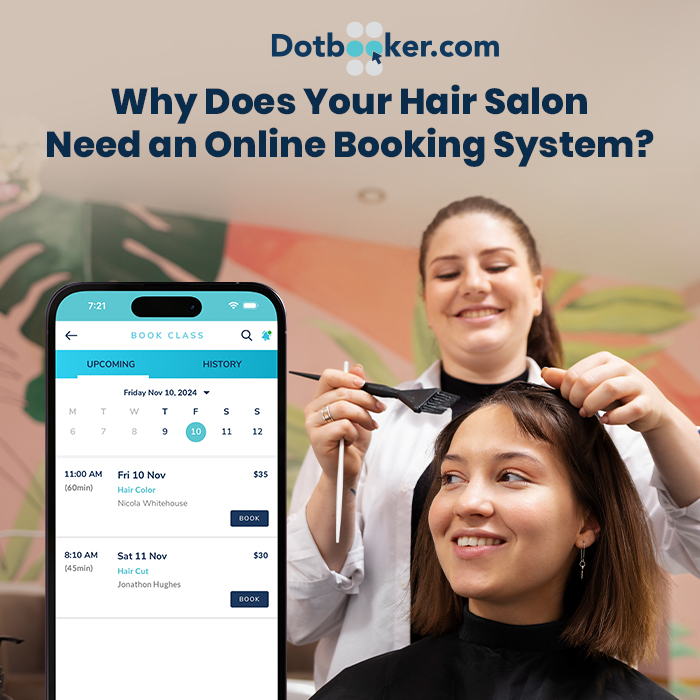
- Sep 08, 2024
- 4051

- Nov 11, 2022
- 3489
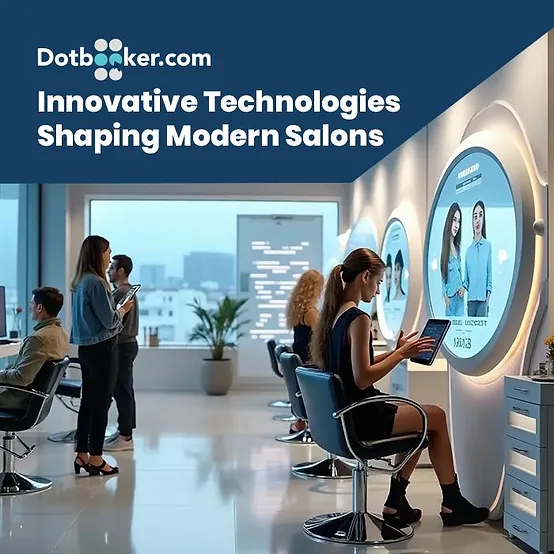
- Sep 16, 2024
- 2865
Transform your business now!

Get an expert consultation for your business's streamlined operations.
